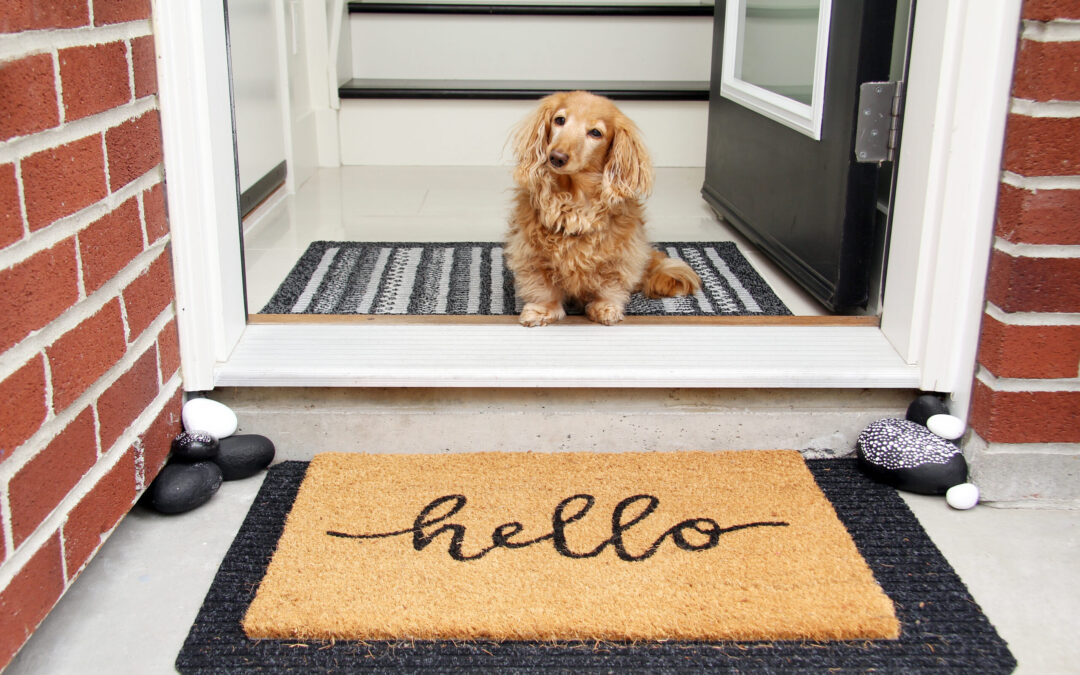
Prevent Your Dog From Dashing Out the Door
Written by Amanda Rietheimer, CDBC, CPDT-KA
Doors are one of the most exciting places for a dog and difficult places for an owner. As a Certified Dog Behavior Consultant (CDBC), door greetings is one area that seems to be the most challenging to tackle for both the dog and the owner. Sometimes the dog is jumping all over our guest, or in extreme cases, the dog is charging the door when the doorbell rings, barking and lunging aggressively or even trying to escape.
No matter what dog behavior you are struggling with at the door, training starts with you first and your daily interactions. I tell all my clients not to focus on the behavior that frustrates them but rather on what behavior they want to see in the future. Any owner who is experiencing aggressive behavior at the door with their dog will need to seek the help of a CDBC to guide them through properly controlled greetings.
If your dog is a young exuberant puppy that is jumping on guests or dashing out the door, the first step is to put your dog up in a room or crate before your guest arrives. Practice calling your dog to you when the doorbell rings and treating them before putting them on a leash for the times when visitors come unexpectedly. Once on a leash, put your dog in a secure location, such as behind a gate or in another room, and then let your guest in. If you have another person in the house, ask them to open the door while you stand 20 feet from the door with your dog. Ask your guest to stay at the door while you work with your dog to do a controlled greeting.
A controlled greeting means you are treating your dog for focus and calm attention on you. When he is not pulling on the leash to get to your guest then take two to three steps forward and stop. If your dog is calm and not pulling, we treat them and continue in the same manner. If they are pulling, we wait for them to stop or go backward two to three steps until our dog is calm. We continue with this forward and backward-stepping approach depending on our dog’s calmness and pressure on the leash.
The goal is to walk your dog up to your guest without any pressure on the leash and have a calm dog. Our guest should have treats to help reinforce the dog for staying on the ground and not jumping. If our dog jumps, again, we call the dog back to us and move backward away from our guest. Our dog should not come off leash until we have enough practice on leash and no jumping or dashing behavior.









